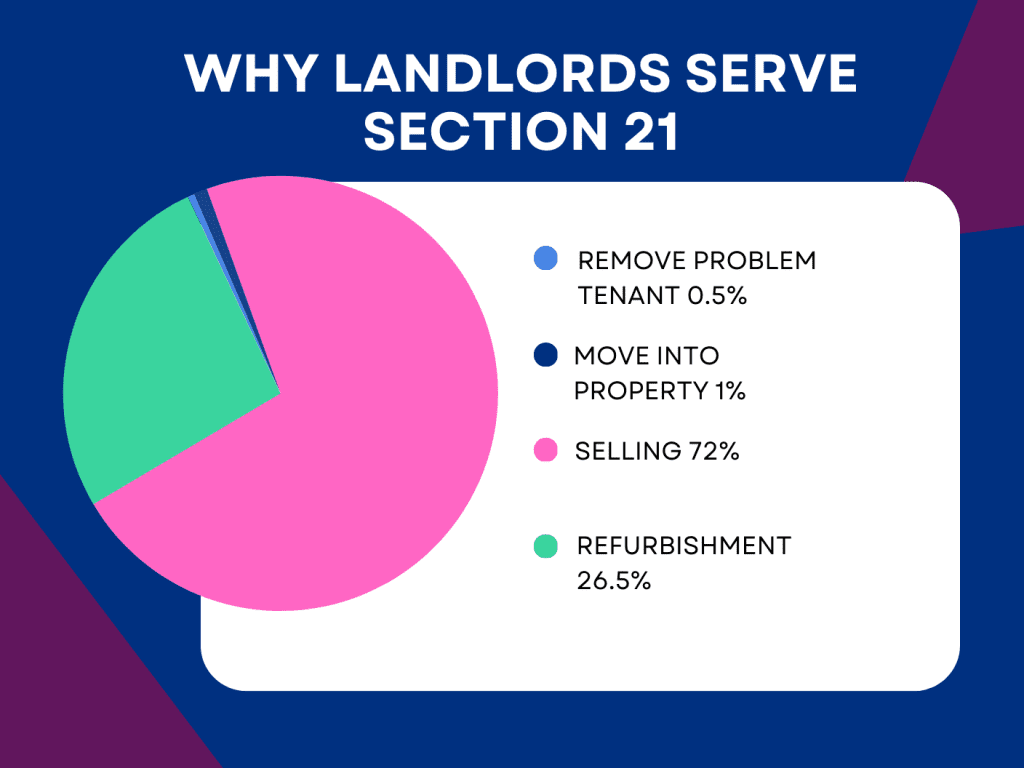As a landlord in the UK, it’s essential to understand the legal requirements surrounding the Right to Rent and the Immigration Act. These regulations ensure that landlords only rent properties to individuals who have the legal right to reside in the country. This guide will help you navigate these responsibilities and stay compliant with the law.

What is Right to Rent?
The Right to Rent is a legal requirement under the Immigration Act 2014, which obliges landlords to check the immigration status of their tenants to ensure they have the right to live in the UK. This law aims to prevent illegal immigration by making it more difficult for those without the legal right to stay in the country to rent property.
Key Responsibilities of Landlords
As a landlord, you are required to:
1. Conduct Right to Rent Checks: Verify the immigration status of all prospective tenants before the start of a tenancy.
2. Maintain Records: Keep copies of the documents you check, and record the date you made the check.
3. Follow-Up Checks: Conduct follow-up checks on tenants with time-limited Right to Rent status.
4. Report: Inform the Home Office if you find that a tenant no longer has the Right to Rent.
How to Conduct a Right to Rent Check
1. Obtain Original Documents: Ask prospective tenants for original documents that prove their right to be in the UK. Acceptable documents include a passport, biometric residence permit, or a combination of documents as specified by the Home Office.
2. Check Validity: Ensure the documents are genuine, belong to the tenant, and have not expired. Check for any inconsistencies and verify that photographs and dates of birth are consistent across documents.
3. Make Copies: Make clear and legible copies of the documents and retain them securely. Record the date of the check on the copies.
4. Retain Records: Keep the copies for the duration of the tenancy and for at least one year after it ends.
Acceptable Documents
The Home Office provides a list of acceptable documents, divided into two groups:
Group 1: Documents that demonstrate an indefinite right to rent. Examples include a UK passport, an EEA/Swiss national passport or identity card, or a permanent residence card.
Group 2: Documents that demonstrate a time-limited right to rent. Examples include a visa, a biometric residence permit with a time limit, or a Home Office immigration status document.
Follow-Up Checks
If a tenant has a time-limited Right to Rent, you must conduct follow-up checks before their permission to stay in the UK expires. This typically involves re-checking their documents to ensure they still have the right to rent.
Penalties for Non-Compliance
Failing to comply with Right to Rent regulations can result in significant penalties:
Civil Penalties: Landlords can be fined up to £3,000 per tenant who does not have the Right to Rent.
Criminal Penalties: In severe cases, such as knowingly renting to someone without the Right to Rent, landlords can face an unlimited fine and up to five years in prison.
How to Report
If you discover that a tenant no longer has the Right to Rent, you must report this to the Home Office. You can do this by contacting the Home Office’s Landlord Checking Service.
Best Practices for Compliance
1. Stay Informed: Keep up to date with any changes to the Right to Rent regulations.
2. Use a Checklist: Develop a checklist for conducting Right to Rent checks to ensure you don’t miss any steps.
3. Train Your Staff: If you have staff managing your properties, ensure they are fully trained on Right to Rent requirements.
4. Seek Legal Advice: If in doubt, seek legal advice to ensure you are fully compliant with all regulations.
Conclusion
Understanding and complying with the Right to Rent requirements under the Immigration Act is essential for all landlords in the UK. By conducting thorough checks, maintaining accurate records, and staying informed about regulatory changes, you can ensure your rental practices are lawful and avoid significant penalties. For more detailed information, visit the official [Home Office guidance](https://www.gov.uk/government/collections/landlords-immigration-right-to-rent-checks).
Feel free to share your thoughts and experiences in the comments below. Together, we can ensure that rental practices across the UK are fair, legal, and secure.
As a landlord, maintaining your rental property is crucial, but it’s equally important to understand and clarify your tenants’ responsibilities regarding property inspections. Educating your tenants about their roles can lead to better property upkeep and a harmonious landlord-tenant relationship. This guide will help you inform your tenants about their responsibilities and how they can contribute to the property’s maintenance.

Why Tenant Responsibilities Matter
Ensuring tenants understand their responsibilities helps in several ways:
1. Property Maintenance: Tenants who are aware of their duties are more likely to keep the property in good condition.
2. Issue Identification: Tenants can identify and report issues early, preventing minor problems from becoming major repairs.
3. Legal Compliance: Clear communication about responsibilities helps both landlords and tenants stay compliant with tenancy agreements and housing regulations.
4. Positive Relationships: Clear expectations reduce misunderstandings and foster a positive landlord-tenant relationship.
Key Tenant Responsibilities for Inspections

Here are the main areas where tenants play a crucial role:
1. Routine Cleaning and Upkeep: Tenants should keep the property clean and tidy, including regular cleaning of bathrooms, kitchens, and common areas.
2. Reporting Issues: Tenants must promptly report any maintenance issues or potential hazards to the landlord. This includes leaks, electrical problems, or signs of pest infestations.
3. Allowing Access for Inspections: Tenants need to allow access for scheduled inspections and necessary repairs. Proper notice should be given, usually 24-48 hours in advance, unless in case of emergencies.
4. Maintaining Safety Features: Tenants should regularly test smoke detectors and carbon monoxide alarms, replacing batteries as needed and notifying the landlord of any malfunctions.
5. Proper Use of Appliances and Fixtures: Tenants should use appliances and fixtures correctly to avoid unnecessary wear and tear. This includes not overloading electrical outlets and using heating and cooling systems responsibly.
6. Garden Maintenance (if applicable): In cases where tenants are responsible for garden maintenance, they should keep gardens and lawns in good condition, following any specific guidelines provided in the tenancy agreement.
7. Respecting the Property: Tenants should avoid causing damage to the property, such as holes in walls or damage to flooring. Any accidental damage should be reported immediately.

How to Communicate Tenant Responsibilities
1. Clear Tenancy Agreement: Include detailed responsibilities in the tenancy agreement. This ensures both parties are aware of their duties from the outset.
2. Welcome Pack: Provide a welcome pack for new tenants, outlining their responsibilities and providing tips for maintaining the property.
3. Regular Reminders: Send periodic reminders about key responsibilities, especially seasonal tasks like gutter cleaning or garden maintenance.
4. Open Communication: Encourage tenants to communicate openly about any concerns or questions they have regarding their responsibilities.
Preparing for Tenant Inspections
To ensure inspections go smoothly, tenants should:
1. Prepare the Property: Before an inspection, tenants should ensure the property is clean and accessible, and any pets are secured.
2. Be Present: While not always necessary, tenants being present during the inspection can be helpful for addressing any immediate concerns or questions.
3. Provide Feedback: Encourage tenants to provide feedback on any maintenance issues or potential improvements they notice during their stay.

Conclusion
By clearly communicating tenant responsibilities and encouraging proactive engagement, landlords can maintain their properties more effectively and foster positive relationships with their tenants. Educating tenants on their roles in inspections not only helps in preserving the property but also ensures a safe and comfortable living environment for everyone involved.
For more advice on managing rental properties and fostering good landlord-tenant relationships, explore our other articles and feel free to share your experiences and tips in the comments below. Working together, we can create better living conditions for all.
As a landlord, ensuring your rental property remains in top condition is key to maintaining its value and providing a safe and comfortable environment for your tenants. One of the most effective ways to achieve this is through regular preventative maintenance inspections. This guide will help you understand the importance of these inspections and how to conduct them effectively.
Why Preventative Maintenance Inspections Matter

Preventative maintenance inspections are routine checks that help identify and address potential issues before they become significant problems. Here are several reasons why they are essential:
1. Cost Savings: Regular inspections can save you money in the long run by identifying minor issues before they escalate into costly repairs.
2. Tenant Satisfaction: A well-maintained property ensures a comfortable living environment, leading to higher tenant satisfaction and retention.
3. Compliance: Regular inspections help ensure your property complies with safety regulations and standards, reducing the risk of legal issues.
4. Property Value: Keeping your property in good condition helps maintain and even increase its value over time.
Key Areas to Inspect


When conducting a preventative maintenance inspection, focus on the following areas:
1. Roof and Gutters: Check for loose or missing tiles, leaks, and blockages in gutters and downspouts.
2. Exterior: Inspect walls, windows, and doors for cracks, damp, or signs of wear and tear. Ensure all locks and latches are working correctly.
3. Plumbing: Look for leaks, drips, or blockages in sinks, toilets, and showers. Check the water pressure and ensure there are no signs of mould or dampness around plumbing fixtures.
4. Electrical Systems: Test all electrical outlets, switches, and light fixtures. Ensure that the fuse box and circuit breakers are functioning correctly.
5. Heating and Cooling Systems: Regularly service boilers, radiators, and air conditioning units. Check for unusual noises or inefficient operation.
6. Safety Features: Ensure smoke detectors, carbon monoxide detectors, and fire extinguishers are in working order. Check for any trip hazards and ensure stairways and handrails are secure.
7. Interior: Inspect walls, ceilings, and floors for signs of damage or wear. Ensure that all appliances are in good working order and check for any signs of pest infestations.
Creating a Maintenance Schedule


To keep on top of preventative maintenance, create a comprehensive schedule:
1. Monthly Checks: Test smoke and carbon monoxide detectors, inspect the exterior for any immediate issues, and check plumbing fixtures for leaks.
2. Quarterly Checks: Inspect the roof and gutters, check the interior for signs of wear, and service heating and cooling systems.
3. Biannual Checks: Conduct a thorough inspection of all electrical systems, service major appliances, and perform a deep clean of the property.
4. Annual Checks: Have a professional inspection of the boiler and heating systems, check the insulation, and review the overall condition of the property.
Best Practices for Conducting Inspections
1. Use a Checklist: A detailed checklist ensures you cover all areas during the inspection. Tailor your checklist to the specific needs of your property.
2. Document Findings: Take notes and photographs of any issues identified during the inspection. This documentation can be valuable for planning repairs and tracking the condition of the property over time.
3. Communicate with Tenants: Inform tenants of upcoming inspections and encourage them to report any issues they’ve noticed. This collaboration can help identify problems early.
4. Hire Professionals: For complex systems like electrical and plumbing, consider hiring professionals to conduct thorough inspections. Their expertise can help identify issues that you might miss.
Conclusion
Regular preventative maintenance inspections are vital for maintaining the value of your rental property, ensuring tenant satisfaction, and avoiding costly repairs. By adopting a proactive approach and creating a consistent maintenance schedule, you can keep your property in excellent condition and provide a safe, comfortable living environment for your tenants.
For more tips and advice on property maintenance, feel free to download our compliance checklist or book on to a call with one of our letting and tenancy management experts here: https://elmbridgelandlordcompliance.co.uk/
A comprehensive guide for landlords; understanding obligations under the Housing Act 2004 and HHSRS inspections.
As a landlord, ensuring your rental property meets health and safety standards is crucial for both your tenants’ well-being and your legal compliance. One essential aspect of this is the Housing Health and Safety Rating System (HHSRS) inspection. This guide will provide you with everything you need to know about HHSRS inspections and how to prepare for them.


What is the HHSRS?
The Housing Health and Safety Rating System (HHSRS) is a risk-based evaluation tool used by local authorities in England and Wales to identify and mitigate potential hazards in residential properties. Introduced under the Housing Act 2004, the HHSRS focuses on minimising health and safety risks to ensure that homes are safe for occupation.
Key Areas of Focus


The HHSRS assesses 29 potential hazards, categorised into four main groups:
1. Physiological Requirements: These include factors like damp and mould growth, excess cold, excess heat, asbestos, and carbon monoxide.
2. Psychological Requirements: This category covers risks like crowding and space, entry by intruders, and noise.
3. Protection Against Infection: It encompasses sanitation and drainage, water supply, and hygiene, pests, and refuse.
4. Protection Against Accidents: This group includes falls, electrical hazards, fire, flames, hot surfaces, and collisions.
The Inspection Process
1. Notification: Typically, tenants may contact the local council if they believe their home poses health or safety risks. The council may then notify you of an impending HHSRS inspection.
2. Inspection: A trained environmental health officer (EHO) will visit your property to identify potential hazards. They use a standardised method to score the severity of each hazard, considering both the likelihood of an incident occurring and the possible harm it could cause.
3. Scoring: Hazards are scored and categorised as Category 1 (serious) or Category 2 (less serious). A Category 1 hazard requires immediate action.
Common Hazards and How to Address Them


1. Damp and Mould: Ensure your property is well-ventilated and free from leaks. Regularly check for signs of dampness and mould, especially in high-moisture areas like bathrooms and kitchens.
2. Excess Cold: Install efficient heating systems and ensure the property is well-insulated. Regularly service heating systems to maintain their efficiency.
3. Fire Safety: Equip the property with smoke alarms, fire extinguishers, and clearly marked escape routes. Ensure electrical installations and appliances are regularly inspected and maintained.
4. Falls: Install handrails on staircases, ensure flooring is secure, and provide adequate lighting in all areas to prevent slips, trips, and falls.
Preparing for an HHSRS Inspection
1. Regular Maintenance: Conduct regular property inspections and maintenance to identify and address potential hazards before they escalate.
2. Tenant Communication: Encourage open communication with your tenants. They should feel comfortable reporting issues that could pose health or safety risks.
3. Documentation: Keep detailed records of all maintenance work, safety checks, and tenant communications. This documentation can be valuable if any issues arise during the inspection.
After the Inspection
If the EHO identifies any Category 1 or significant Category 2 hazards, they may serve a notice requiring you to undertake remedial work. The types of notices include:
Improvement Notice: Requiring specific improvements within a set timeframe.
Prohibition Order: Restricting the use of part or all of the property.
Emergency Remedial Action: Immediate action by the local authority to remedy the hazard, with costs recovered from you.


Conclusion
Understanding the HHSRS and preparing for inspections are crucial steps in maintaining a safe rental property. By proactively addressing potential hazards and maintaining open communication with your tenants, you can ensure your property meets health and safety standards, providing a secure and comfortable living environment.
For more detailed information, you can refer to the official [HHSRS Operating Guidance](https://www.gov.uk/government/publications/hhsrs-operating-guidance-housing-act-2004-guidance-about-inspections-and-assessment-of-hazards-given-under-section-9) provided by the government.
If you are concerned about meeting your obligations as a landlord, we offer a free Tenancy Health Check service designed to help landlords. You can obtain your free checklist download or book in for a call with one our letting and tenancy management experts here: https://elmbridgelandlordcompliance.co.uk/
Jeremy Hunt is gearing up to unveil his second spring budget as chancellor, potentially marking a significant fiscal juncture ahead of an imminent general election. With a stated intention to implement tax reductions in a prudent manner, Hunt’s approach notably excludes second homeowners profiting from short-term rentals.


Over the past fourteen years, Tory economic policies have posed challenges for the buy-to-let market, marked by a series of tax and regulatory adjustments. However, a recent report in the Sunday Times suggests that the upcoming Budget will introduce a £300 million tax initiative targeting the rental sector, purportedly leaked from government sources.
According to the Sunday Times, Chancellor Hunt plans to eliminate various tax incentives for landlords renting out properties for short-term holiday stays rather than long-term tenancies. Despite being perceived as another fiscal imposition by the Conservatives, Hunt argues that this move aims to alleviate housing shortages in coastal regions and popular vacation destinations like Cornwall and the Lake District, where landlords are increasingly converting properties to holiday lets to capitalize on tax advantages, thereby reducing housing availability for local residents.
Propertymark, a leading industry body, has voiced serious concerns about the potential ramifications of this tax intervention on the rental sector. CEO Nathan Emerson highlighted the precarious situation faced by many landlords, emphasizing the need for government recognition that a functional housing system necessitates sustainable conditions for both short-term and long-term rental providers.
Similarly, a spokesperson reiterated Propertymark’s apprehension regarding the rumored tax adjustments, emphasizing the adverse effects on landlords’ viability and the overall housing system’s stability. The relentless targeting of landlords, particularly amidst economic uncertainties like inflation and rising interest rates, underscores the imperative for policymakers to adopt measures conducive to a resilient and equitable housing market.


In a surprising move, Chancellor Rishi Sunak announced the government’s decision to abandon plans that would have compelled landlords to upgrade the energy efficiency of their rental properties. The much-feared minimum Energy Performance Certificate (EPC) standards, which aimed to raise properties to a rating of C by 2028, have been officially scrapped, bringing relief to landlords across England and Wales.
This policy reversal, though not yet officially law, has been a long-awaited reprieve for landlords who have been apprehensive about the potential financial burden of retrofitting their properties. The EPC, a rating system ranging from A to G, had posed a looming challenge, causing some landlords to contemplate selling their properties and exiting the rental sector.
Chancellor Sunak justified this decision by acknowledging the substantial costs associated with upgrading homes, suggesting that these expenses would inevitably be passed on to tenants in the form of higher rents. While the government plans to offer some funding to support landlords in their property upgrades, the fear of fines for non-compliance has been alleviated.
Ben Beadle, chief executive of the National Residential Landlords Association, expressed his relief, emphasizing the much-needed clarity the decision provides. He highlighted the detrimental impact of uncertainty on the supply of rental properties and urged ministers to develop a comprehensive plan supporting the rental market’s energy efficiency improvements.
It’s important to note that not everyone is celebrating this shift in government policy. Dawid Baranowski of property technology firm IMMO believes that the abandonment of minimum energy standards is disheartening, particularly considering their role in achieving environmental goals and reducing cost burdens for consumers. Baranowski argues that renters, who often do not own the properties they occupy, will bear the burden of higher energy bills at a time when the cost of living crisis is already prevalent.
While the government’s decision has its critics, it marks a turning point for landlords who have faced the looming specter of EPC upgrades. The acknowledgment of the financial strain landlords are under during the current economic climate is a step towards fostering a more supportive environment for property owners.
Furthermore, it’s worth noting that the government is increasingly recognizing the importance of the private rental sector (PRS) in the overall housing landscape. As rents and property values continue to outpace the growth of household incomes, there is optimism that the tide may turn on what some perceive as “landlord bashing.” This change in direction aligns with the government’s understanding of the need for a balanced approach that considers both the interests of tenants and landlords in the evolving landscape of the UK housing market.


What is the Renters Reform Bill?
The Renters Reform Bill is a legislative initiative aimed at reshaping the rental landscape in the UK, emphasising increased rights and protections for tenants. This bill, currently navigating the committee stage in the House of Commons, is poised to bring about significant changes to the existing framework governing landlord-tenant relationships.



What is Changing (Key Points)
a) Scrapping Section 21:
The government is set to eliminate Section 21, a notorious provision that allowed landlords to evict tenants without giving a reason. This move is designed to offer tenants greater protection, particularly those facing eviction for requesting necessary property maintenance.
b) Section 8 Expansion:
Section 8, the legal process for possession, will undergo expansion, providing landlords with additional grounds for eviction. This includes scenarios such as selling the property or moving in a family member.
c) Extended Notice Periods:
Notice periods for ending a tenancy will be extended, with significant increases, especially for circumstances like selling or repossessing a property. The proposed timeline for such cases is around three months.
d) Pet Permission:
Under the new bill, tenants will have the right to request permission to keep a pet. Landlords will be unable to unreasonably withhold this permission, although the exact criteria for reasonability remain somewhat vague.
e) Landlord Ombudsman and Property Compliance Portal:
The introduction of a landlord ombudsman and property compliance portal aims to streamline property compliance checks. However, this service will require membership and maintenance for access. Property management firms like Newton Huxley may assist landlords in fulfilling these requirements.


Should Landlords be Worried?
In evaluating the impact on landlords, it appears that concerns may be somewhat alleviated:
Notable Statistics:
Data reveals that out of all Section 21 notices served over the past three years, only 0.5% were for removing problematic tenants. Additionally, the government’s proposed changes to Section 8, including considerations for anti-social behaviour, may cover most scenarios previously addressed by Section 21.
Addressing Common Reasons for Eviction:
The majority of Section 21 notices were issued for reasons such as selling the property, moving in a family member, or refurbishing for increased rental yield. The amended Section 8 is anticipated to cover these scenarios, providing landlords with legal grounds for eviction.
Refurbishment Provision:
While the current proposed bill may not explicitly cover refurbishment-related evictions, it is expected that provisions for essential refurbishments may be addressed in subsequent stages. Newton Huxley are prepared to guide landlords through potential refurbishment decisions based on predicted return on investment.
In conclusion, the Renters Reform Bill presents a notable shift in favour of tenant rights, but proactive management and adherence to the evolving legal landscape can empower landlords to navigate these changes effectively.


Consultation for Landlords on the Renters Reform Bill: Enhancing Your Investment
Navigating the intricacies of the Renters Reform Bill can be a daunting task for landlords. To provide support during this transformative period, the team at Newton Huxley is offering consultation services tailored to the evolving legal landscape. Our experienced property management team is well-versed in the nuances of the bill, ensuring that landlords are informed about the changes and equipped to make strategic decisions. From understanding the amended Section 8 grounds for eviction to exploring opportunities for property enhancement, we aim to guide landlords through every aspect of the reform. By collaborating with Newton Huxley, landlords can proactively assess their investment portfolios, making informed decisions that not only comply with the new regulations but also enhance the overall return on their investment. Embrace the future of property management with confidence, backed by our expertise and commitment to your success.
Len Taylor MARLA our Co-Founder and Head of Lettings is always on hand to advise landlords on how to get the most out of letting their property.
len@newtonhuxley.co.uk
07885 206 631.
The Elmbridge Property Market: A tale of diverging trends


The property market in Elmbridge, encompassing the KT10, KT7, and KT8 postcodes, has been exhibiting intriguing trends in recent times. As we delve into the data, we witness a story of diverging paths, with some areas experiencing a slowdown, while others continue to thrive.
Starting with the KT10 postcode, which includes Esher, Claygate, and Hinchley Wood, the average asking price currently stands at £936,000, reflecting a significant drop from £1,036,000 recorded just a few months ago in May. While this decline might raise concerns, a closer examination of the data reveals that the average value per square foot has remarkably surged by 33% in the last three years, now standing at £655. This substantial increase in property values indicates that the local real estate market has been resilient, making it an appealing choice for long-term investment. Moreover, landlords can also enjoy a steady rental yield of 3.9%, adding another layer of attractiveness to the area.
In contrast, the KT7 postcode, home to Thames Ditton, presents a contrasting picture, with the average asking price currently at £787,000, showcasing a steady rise from the previous £758,000 mark. The data indicates that the average value per square foot has increased by 23% over the past three years, reaching £660. This steady appreciation in property values showcases the desirability of the area, attracting buyers seeking both investment opportunities and a comfortable place to call home. Furthermore, landlords in KT7 can expect an average rental yield of 3.7%, making it an enticing prospect for those looking to expand their rental portfolios.
Finally, the KT8 postcode, which includes Hampton Court, and East & West Molesey, exhibits a modest dip in average asking prices, currently at £586,000 compared to £608,000 previously. However, it is essential to note that the average value per square foot has still increased by 15% over the last three years, standing at £596. The area continues to entice potential buyers and investors, and landlords can enjoy a relatively high average rental yield of 4.4%, providing a promising opportunity for those seeking consistent returns.
Overall, Elmbridge’s property market is far from uniform, with different postcodes showing distinct trajectories. While KT10 has experienced a slight cooling off in asking prices, its remarkable value per square foot growth and competitive rental yields indicate a solid foundation for investment. Meanwhile, KT7’s upward trend in both average prices and value per square foot showcases its resilience in the face of economic fluctuations. KT8, although experiencing a mild dip in asking prices, remains a promising choice for investors, buoyed by a noteworthy increase in value per square foot and attractive rental yields.
As always, it is essential for buyers, sellers, and investors to conduct thorough research and seek professional advice before making any decisions in this dynamic property market. With each postcode offering its unique set of opportunities, Elmbridge remains an exciting destination for those navigating the UK property landscape.
When it comes to selling your home, making a lasting impression during viewings is crucial. Potential buyers need to envision themselves living in your space, and it’s your job to ensure that your home stands out from the competition. By employing a few simple strategies, you can enhance the attractiveness of your property and increase your chances of a successful sale. In this article, we’ll explore seven effective ways to help your home sell on viewings.


Enhance Curb Appeal
The exterior of your home is the first thing potential buyers will see. Boost your home’s curb appeal by ensuring the front yard is well-maintained. Trim the hedges, mow the lawn, and plant some colorful flowers to create an inviting atmosphere. Consider giving the front door a fresh coat of paint and adding tasteful decorations that reflect the character of your home.


Declutter and Depersonalise
Before viewings, it’s essential to declutter and depersonalise your living space. Remove excessive personal items, family photos, and knick-knacks. Clearing the clutter allows buyers to visualise themselves living in the space and keeps the focus on the home’s features. Organize closets and storage areas, as buyers will likely explore these spaces as well.


Highlight Key Features
Emphasize the unique selling points of your home. If you have a stunning fireplace, make sure it’s clean and well-staged. Showcase high ceilings, architectural details, or any other standout features that add value to your property. Ensure that the lighting is adequate, as good lighting can greatly enhance the ambiance of each room.


Stage Your Home
Consider staging your home to create a welcoming and appealing environment. Use neutral colors and arrange furniture in a way that maximizes space and flow. By strategically placing attractive and functional pieces, you can help buyers envision how they can utilize the available space. Remember to keep it clean, tidy, and inviting.



Make Necessary Repairs
Addressing visible issues is crucial to making a positive impression on potential buyers. Fix any leaky faucets, loose doorknobs, or squeaky floors. Take care of minor cosmetic repairs such as chipped paint or cracked tiles. By presenting a well-maintained property, you instill confidence in buyers and eliminate potential negotiation points.


Create a Welcoming Atmosphere
During viewings, create a pleasant atmosphere by paying attention to details. Open curtains and blinds to let in natural light and showcase your home’s beautiful views. Consider playing soft background music and create a comforting aroma with freshly baked cookies or scented candles. A warm and inviting environment will leave a lasting impression on visitors.



Provide Information and Documentation
Prepare a packet of useful information about your home to give to potential buyers. Include details about recent renovations, upgrades, and any warranties that may be transferrable. Also, provide information about the neighborhood, nearby amenities, and local schools. By providing this information upfront, you demonstrate transparency and help buyers make informed decisions.
Selling a home is an exciting but challenging process. By implementing these seven strategies, you can significantly increase your chances of selling your home quickly and at a desirable price. Enhancing curb appeal, decluttering, highlighting key features, staging, making necessary repairs, creating a welcoming atmosphere, and providing relevant information are all effective ways to make your home stand out during viewings. Remember, the goal is to help potential buyers visualize themselves living in your space, so make it as appealing as possible.
As the heartbeat of the British economy, the housing market is highly sensitive to various factors, one of which is interest rates. Recently, the United Kingdom has experienced a series of interest rate hikes, leaving homeowners, potential buyers, and real estate professionals pondering the consequences. In this blog post, we delve into the effects of these interest rate increases on the local property market in East Molesey, Claygate, and Thames Ditton, three vibrant communities within the beautiful Elmbridge area.
Understanding Interest Rate Hikes: To grasp the implications of recent interest rate hikes, it is essential to comprehend why they occur. Interest rates are influenced by the monetary policy decisions made by the Bank of England (BoE) to control inflation and maintain economic stability. When the BoE raises interest rates, it becomes more expensive to borrow money, affecting mortgages, loans, and overall market dynamics.
The Impact on Local Property Prices: Interest rate hikes can have a direct impact on property prices in Elmbridge and its surrounding areas. As the cost of borrowing increases, potential buyers may face higher mortgage repayments, leading to a decrease in affordability. This could potentially slow down the demand for properties and, in turn, influence pricing levels. However, the impact may vary depending on factors such as local market conditions, supply and demand dynamics, and the overall desirability of the area.
Effects on Buyer Behavior: In a climate of rising interest rates, prospective buyers often reassess their purchasing decisions. Affordability concerns may cause some buyers to postpone or reconsider their property search, opting for more conservative choices. On the other hand, some individuals might perceive the rate hikes as a signal of a strengthening economy and view it as an opportune time to invest in property before prices potentially rise further.
Shifting Dynamics for Homeowners: Existing homeowners within the Elmbridge area may experience a change in their financial circumstances due to interest rate hikes. For those with variable-rate mortgages, the increase in rates will lead to higher monthly mortgage repayments. Consequently, homeowners might adopt a more cautious approach, focusing on budgeting and potentially reducing spending on other areas of their lives.
The Role of Supply and Demand: The local property market in East Molesey, Claygate, and Thames Ditton is driven by a delicate balance of supply and demand. Interest rate hikes can impact this equilibrium. If demand decreases due to higher borrowing costs, the number of potential buyers might decline. Conversely, a decrease in demand could motivate sellers to reevaluate their pricing strategies, leading to more competitive offers and potentially a more balanced market.
Conclusion:
The recent interest rate hikes in the UK have undoubtedly cast a ripple effect on the local property market in East Molesey, Claygate, and Thames Ditton. While there may be short-term adjustments in buyer behavior and property prices, it is essential to consider the broader economic context and long-term market stability. As trusted estate agents in Elmbridge, we remain dedicated to providing up-to-date insights and assisting our clients in navigating these changes effectively.
Remember, the impact of interest rate hikes on the local property market is a dynamic process, and monitoring the ongoing developments is crucial for both buyers and sellers. Stay informed, consult professionals, and make informed decisions to ensure your success in this evolving landscape.
Elevating the Elmbridge property market
Visit us in Molesey
East Molesey
Surrey
KT8 9ER
VISIT US IN ESHER
Claygate
Esher
Surrey
KT10 0PD


